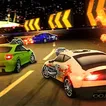


















































Explore the Best Online Parking Games for Free
Embark on a journey through the engaging world of free online parking games. This guide offers insights into the captivating challenges and skills development that these games provide, appealing to both casual players and driving enthusiasts.
Mastering the art of virtual parking requires a blend of skills that go beyond the keyboard or controller. These games demand a keen sense of spatial awareness, an understanding of vehicle dimensions, and the ability to execute precise maneuvers. As players navigate tight spaces and avoid obstacles, they are unknowingly honing skills that can translate to real-world driving.
The evolution of parking games has been remarkable. From the early days of simple 2D graphics and basic gameplay, the genre has expanded into sophisticated 3D experiences that mimic the complexities of actual parking. Advances in technology have not only improved the visual aspects but also the physics engines that drive the realism of these games. Players can now enjoy a variety of scenarios, from bustling city parking lots to challenging weather conditions, all adding to the depth and replayability of the games.
Looking ahead, the future of online parking games is bright with potential. Emerging technologies like virtual reality promise to take immersion to new levels, allowing players to feel as though they are truly behind the wheel. Artificial intelligence could introduce dynamic environments that adapt to individual player behavior, creating a personalized gaming experience. These innovations have the power to redefine the genre, making virtual parking more than just a game, but a valuable tool for drivers everywhere.
Mastering the Art of Virtual Parking
Mastering the art of virtual parking is akin to learning an instrument; it demands patience, precision, and a fine-tuned sense of timing. The virtual world offers a safe and controlled environment where players can practice parking techniques without the risk of real-life fender benders. As they progress through levels, players develop a sharper sense of spatial awareness, learning to judge distances and angles with increasing accuracy.
These games often start with simple tasks to ease players into the mechanics, but quickly escalate to more complex scenarios that require careful planning and control. Maneuvering through tight spaces, reversing into narrow slots, and navigating busy lots under time constraints are just a few of the challenges that await. Each successful park is a step closer to becoming a virtual parking master.
Moreover, these games subtly instill fundamental driving principles. Players learn the importance of checking mirrors, signaling, and the timing of acceleration and braking. They also become adept at anticipating the actions of other drivers and pedestrians, which is crucial for real-life driving.
The beauty of online parking games lies in their ability to cater to a wide range of players. Whether you’re a seasoned driver looking to polish your skills or a newcomer eager to learn the ropes before hitting the road, these games offer a fun and educational experience. The satisfaction of perfectly sliding into a tight spot or flawlessly completing a tricky parking challenge is a rewarding experience that keeps players engaged and eager to improve.
In essence, virtual parking games are more than just a pastime; they are a modern tool for enhancing our understanding and execution of one of driving’s most fundamental tasks.
The Evolution and Advancements in Parking Games
The trajectory of parking games is a testament to the rapid advancement of gaming technology. Initially, these games presented players with rudimentary challenges, often limited to moving a static car image into a designated spot on a two-dimensional plane. The simplicity of these early games was a reflection of the limited capabilities of technology at the time.
As technology progressed, so did the complexity and realism of parking games. Developers began to introduce three-dimensional environments, which allowed for a more authentic and engaging experience. The introduction of 3D graphics enabled a more lifelike representation of vehicles and environments, making the act of parking feel more genuine. Players could now navigate multi-level parking structures, bustling streets, and even face the challenge of parallel parking in tight urban spaces.
The physics engines of these games have also seen significant improvements. Early games operated on very basic collision detection, but now, sophisticated physics algorithms simulate the weight and momentum of vehicles, the grip of tires on different surfaces, and even the impact of weather conditions on driving. These advancements have not only made the games more enjoyable but also more educational, as they mirror the complexities of real-world driving more closely.
The social aspect of gaming has influenced parking games as well. With the rise of online gaming communities, players can now compete against each other, share tips, and even create custom parking challenges. This has added a new dimension to the genre, transforming it from a solitary activity into a shared experience that connects players from around the globe.
In sum, the evolution of parking games has mirrored the broader trends in gaming, with each new technological breakthrough leading to more immersive and realistic experiences. These games have evolved from simple diversions into sophisticated simulations that offer both entertainment and practical skill development.
The Future of Online Parking Games
The future of online parking games is poised on the cusp of a technological revolution that promises to redefine the entire gaming experience. With the advent of virtual reality (VR), players may soon find themselves immersed in hyper-realistic parking scenarios, where the line between game and reality blurs. VR could enable gamers to experience the nuances of parking with a full 360-degree perspective, adding a new layer of depth and engagement.
Artificial intelligence (AI) is another frontier set to transform these games. Imagine AI-powered traffic that mimics human behavior, creating dynamic and unpredictable parking environments. This could lead to a more adaptive learning experience, where the game adjusts to the player’s skill level, offering tailored challenges that keep the gameplay both exciting and educational.
Moreover, the integration of online multiplayer features could evolve further, allowing for real-time parking challenges against friends or drivers from around the world. This social component could foster a competitive yet collaborative atmosphere, encouraging players to share strategies and improve together.
The potential for educational applications is also significant. As these games become more realistic, they could be used as virtual training tools for new drivers, providing a safe and controlled setting to practice parking before taking to the streets.
In conclusion, the future of online parking games holds immense promise, with VR, AI, and enhanced social connectivity leading the charge towards an even more immersive and beneficial gaming experience. As these technologies continue to advance, they will not only entertain but also serve as a valuable resource for drivers of all levels to refine their skills in the virtual world.